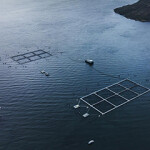Finite supply fuels US market for king and snow crab, defying seafood category dip

Limited availability of king crab and snow crab has boosted U.S. buyer interest, in defiance of a downward sales trend across the seafood category.
On 15 October, the red king crab fishery in Alaska’s Bristol Bay officially opened with a 2.2-million-pound quota, following a two-year closure. As recently as 2016, the total allowable harvest was set at 8.47 million pounds; in 1980, it was 130 million pounds.
Alaska crab fishermen have thus far in the season reported receiving solid prices for their catch – around USD 8.00 (EUR 7.37) from processors or up to USD 25.00 (EUR 23.05) selling directly to consumers, but said the limited quota meant their earnings from the season would not sustain them for long.
“Having a lack of snow crab for the second year in a row, it does make things very, very difficult. It really did put the fleet in financial dire straits,” Alaska Bering Sea Crabbers President Gabriel Prout told Alaska Public Media.
However, with the Bering Sea snow crab fishery remaining closed for a second year after a marine heatwave decimated the population in 2019, Prout said several crab fishing vessel owners are in financial trouble.
“A lot of fishermen, you know, bought into the resource when it was predicted to be extremely healthy,” Prout said. “Now the banks are trying to figure out ways to collect on that revenue that’s just not there because the seasons are closed.”
Alaska Department of Fish and Game Biologist Mark Stichert said reopening the red king crab fishery was a close call.
“The decline has stopped. But whether or not we’re seeing a rebound in the biomass is hard to say,” Stichert said, according to the Alaska Beacon.
In Kodiak, Alaska, fishermen are looking forward to the tanner crab season, which begins in January 2024. But the quota has been …
Photo courtesy of StopperOhana/Shutterstock




Share